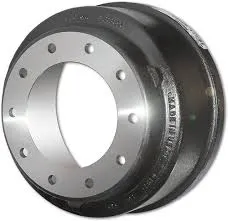
-
 Afrikaans
Afrikaans -
 Albanian
Albanian -
 Amharic
Amharic -
 Arabic
Arabic -
 Armenian
Armenian -
 Azerbaijani
Azerbaijani -
 Basque
Basque -
 Belarusian
Belarusian -
 Bengali
Bengali -
 Bosnian
Bosnian -
 Bulgarian
Bulgarian -
 Catalan
Catalan -
 Cebuano
Cebuano -
 Corsican
Corsican -
 Croatian
Croatian -
 Czech
Czech -
 Danish
Danish -
 Dutch
Dutch -
 English
English -
 Esperanto
Esperanto -
 Estonian
Estonian -
 Finnish
Finnish -
 French
French -
 Frisian
Frisian -
 Galician
Galician -
 Georgian
Georgian -
 German
German -
 Greek
Greek -
 Gujarati
Gujarati -
 Haitian Creole
Haitian Creole -
 hausa
hausa -
 hawaiian
hawaiian -
 Hebrew
Hebrew -
 Hindi
Hindi -
 Miao
Miao -
 Hungarian
Hungarian -
 Icelandic
Icelandic -
 igbo
igbo -
 Indonesian
Indonesian -
 irish
irish -
 Italian
Italian -
 Japanese
Japanese -
 Javanese
Javanese -
 Kannada
Kannada -
 kazakh
kazakh -
 Khmer
Khmer -
 Rwandese
Rwandese -
 Korean
Korean -
 Kurdish
Kurdish -
 Kyrgyz
Kyrgyz -
 Lao
Lao -
 Latin
Latin -
 Latvian
Latvian -
 Lithuanian
Lithuanian -
 Luxembourgish
Luxembourgish -
 Macedonian
Macedonian -
 Malgashi
Malgashi -
 Malay
Malay -
 Malayalam
Malayalam -
 Maltese
Maltese -
 Maori
Maori -
 Marathi
Marathi -
 Mongolian
Mongolian -
 Myanmar
Myanmar -
 Nepali
Nepali -
 Norwegian
Norwegian -
 Norwegian
Norwegian -
 Occitan
Occitan -
 Pashto
Pashto -
 Persian
Persian -
 Polish
Polish -
 Portuguese
Portuguese -
 Punjabi
Punjabi -
 Romanian
Romanian -
 Russian
Russian -
 Samoan
Samoan -
 Scottish Gaelic
Scottish Gaelic -
 Serbian
Serbian -
 Sesotho
Sesotho -
 Shona
Shona -
 Sindhi
Sindhi -
 Sinhala
Sinhala -
 Slovak
Slovak -
 Slovenian
Slovenian -
 Somali
Somali -
 Spanish
Spanish -
 Sundanese
Sundanese -
 Swahili
Swahili -
 Swedish
Swedish -
 Tagalog
Tagalog -
 Tajik
Tajik -
 Tamil
Tamil -
 Tatar
Tatar -
 Telugu
Telugu -
 Thai
Thai -
 Turkish
Turkish -
 Turkmen
Turkmen -
 Ukrainian
Ukrainian -
 Urdu
Urdu -
 Uighur
Uighur -
 Uzbek
Uzbek -
 Vietnamese
Vietnamese -
 Welsh
Welsh -
 Bantu
Bantu -
 Yiddish
Yiddish -
 Yoruba
Yoruba -
 Zulu
Zulu
Feb . 03, 2025 01:45
Back to list
drum brake adjusting plug
Drum brakes, a resilient component in many automotive systems, rely heavily on correct maintenance to ensure optimal performance and safety. Central to this maintenance process is the drum brake adjusting plug, a tiny yet pivotal part that demands attention from every car enthusiast and professional mechanic alike.
Authoritativeness on this topic is underscored by insights from automotive manuals and industry experts. Most vehicle manuals dedicate a section to brake maintenance, reinforcing the necessity of regular adjustments for maximizing drum brake life. Furthermore, professional mechanics emphasize the importance of wearing personal protective equipment when handling brake components, given the risk of exposure to brake dust. Trustworthiness is crucial in any discussion about vehicle maintenance. It's advisable to purchase adjusting plugs and related components from reputable suppliers. Counterfeit or inferior-quality substitutes can compromise brake performance and, consequently, vehicle safety. When replacing an adjusting plug, it’s essential to match the specific make and model of the vehicle to ensure compatibility and reliable function. In addition to routine maintenance, innovation in drum brake tech should not be overlooked. Some modern vehicles now incorporate self-adjusting mechanisms, diminishing the need for frequent manual adjustments. However, the drum brake adjusting plug still plays a role in initial setups and diagnosis. Therefore, staying informed about changes in brake technology and keeping skills updated through workshops and continued education can significantly enhance the performance and safety profiles of vehicles under one's care. Ultimately, the drum brake adjusting plug embodies more than just a mechanical component; it represents a confluence of expertise, precise craftsmanship, and a commitment to safety. Proper understanding and handling of this tool are vital for anyone dedicated to maintaining the integrity of traditional braking systems. Embracing an informed, diligent approach ensures that every vehicle retains its stopping power, promising a smoother and safer driving experience.


Authoritativeness on this topic is underscored by insights from automotive manuals and industry experts. Most vehicle manuals dedicate a section to brake maintenance, reinforcing the necessity of regular adjustments for maximizing drum brake life. Furthermore, professional mechanics emphasize the importance of wearing personal protective equipment when handling brake components, given the risk of exposure to brake dust. Trustworthiness is crucial in any discussion about vehicle maintenance. It's advisable to purchase adjusting plugs and related components from reputable suppliers. Counterfeit or inferior-quality substitutes can compromise brake performance and, consequently, vehicle safety. When replacing an adjusting plug, it’s essential to match the specific make and model of the vehicle to ensure compatibility and reliable function. In addition to routine maintenance, innovation in drum brake tech should not be overlooked. Some modern vehicles now incorporate self-adjusting mechanisms, diminishing the need for frequent manual adjustments. However, the drum brake adjusting plug still plays a role in initial setups and diagnosis. Therefore, staying informed about changes in brake technology and keeping skills updated through workshops and continued education can significantly enhance the performance and safety profiles of vehicles under one's care. Ultimately, the drum brake adjusting plug embodies more than just a mechanical component; it represents a confluence of expertise, precise craftsmanship, and a commitment to safety. Proper understanding and handling of this tool are vital for anyone dedicated to maintaining the integrity of traditional braking systems. Embracing an informed, diligent approach ensures that every vehicle retains its stopping power, promising a smoother and safer driving experience.
Latest news
-
What Are Drum BrakesNewsJul.07,2025
-
Understanding Brake Drum MaterialNewsJul.07,2025
-
Semi-Trailer Brake Drum: A Key Component for Extreme Loads and Long-Distance TransportNewsJul.07,2025
-
Drum Brake Pads for SaleNewsJul.07,2025
-
Brake Drums for SaleNewsJul.07,2025
-
Brake Drum ManufacturerNewsJul.07,2025
-
Aluminum Brake Drums: The Future of High-Performance CarsNewsJul.07,2025
